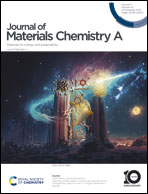Capturing volatile organic compounds using Ag and Au nanoparticles: regium–π and C–H⋯Ag/Au interactions at work†
Abstract
Volatile Organic Compounds (VOCs) are chemicals that vaporize at room temperature and exert short- or long-term adverse effects on human health and the environment. In this study, Ag and Au nanoparticles (NPs) were used to capture aromatic VOCs (e.g. benzene derivatives) through the establishment of CH⋯Ag/Au interactions and regium–π bonds (Rg–π), namely, an attractive noncovalent force involving low electron density sites located on noble metal NPs acting as electron acceptors and π-systems as electron donors. Using a set of computational tools (PBE0-D3/def2-TZVP level of theory), we modeled the interaction between the VOCs and the Ag/Au NPs, being useful to understand its strength and physical nature. On the other hand, thermal desorption (TD) experiments evidenced the presence of a noncovalent interaction between the surface of the NPs and VOCs that drives the molecular recognition process, in line with the results gathered from calculations. We believe the results gathered herein will be useful (i) to bring the attention of the materials science community to this novel type of noncovalent force, (ii) to expand the current knowledge and usage of Ag and Au NPs and (iii) to develop new nanoscale materials for capturing volatile compounds.



 Please wait while we load your content...
Please wait while we load your content...